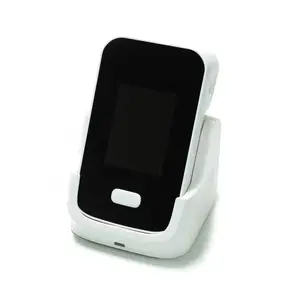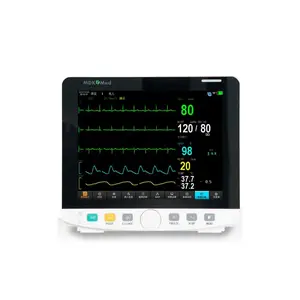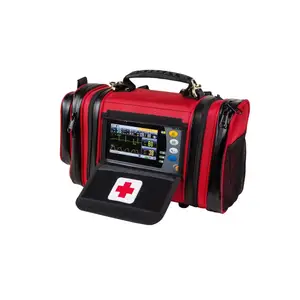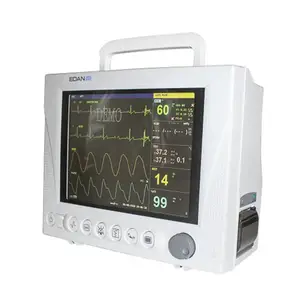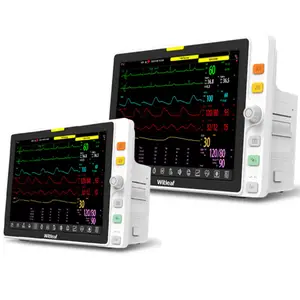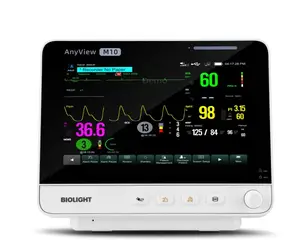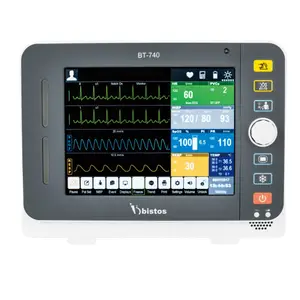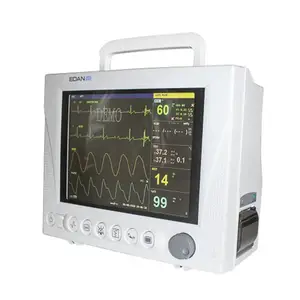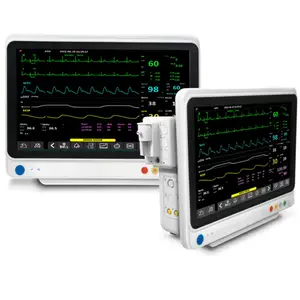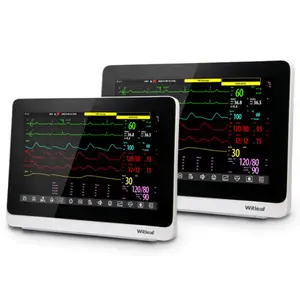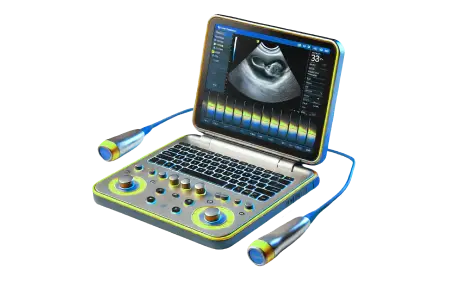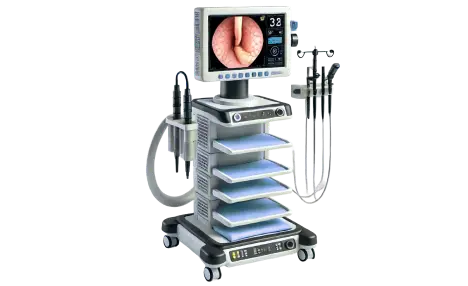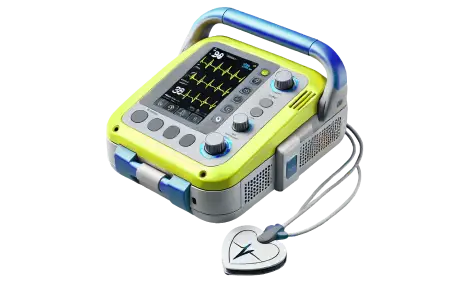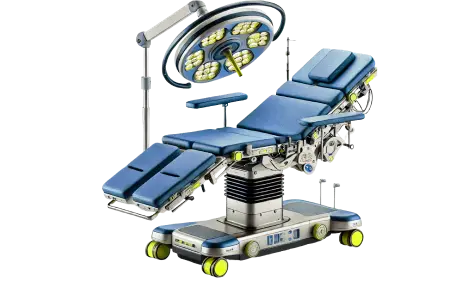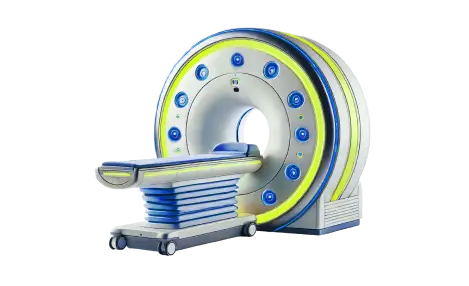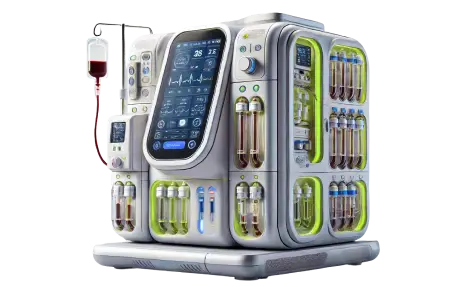Patient monitors
92 productsWhat are patient monitors used for?
The patient monitor measures heart rate, blood oxygen saturation, body temperature, blood pressure, and electrocardiogram. The patient monitor has an ergonomic design, an LCD screen, and an internal battery. In emergency medicine and after surgery, patient monitors allow you to track several physiological parameters simultaneously, displaying the results on the monitor and providing a quick response to medical staff.
Main functions of patient monitors
- RESP - measuring sympathetic nerve activity and vital signs during sleep. Respiration rate tracking using impedance sensors for continuous monitoring of breathing patterns and early detection of respiratory distress.
- SpO2 - measuring arterial blood oxygen saturation using reliable pulse oximetry technology. Due to the fact that oxygenated and unsaturated hemoglobin absorb light differently, accurate results are obtained.
- PR is an important function for assessing physical condition, detecting heart rhythm disorders, monitoring exercise intensity and stress levels. PR determines the interval between atrial and ventricular excitation, which reflects the efficiency of atrial-ventricular conduction.
- NIBP is an automatic non-invasive method of measuring blood pressure with adjustable intervals and different modes. The oscillometry method is used for both adults and children.
- TEMP - accurate temperature measurement with options for monitoring both internal and peripheral temperature.
- ECG - an electrocardiogram is constantly displayed on the screen, which helps to assess the physiological state of the patient. Monitoring is carried out using electrodes (3/5/12) attached to the body.
Types of patient monitors
For medical purposes
By number of channels
By age group
By scope of use
Highly specialized devices, such as BIS monitors, help to assess the patient's depth of consciousness after anesthesia and during surgery.
Or, fetal monitors have specialized functions for monitoring the condition of the fetus and the activity of the uterus.
Key criteria for choosing a patient monitor
The screen diagonal and control method also affect the operation, as large touch screens make data visualization easier. Mechanical buttons and touchscreen controls provide reliable backup options in case of emergencies.
The type of power supply should be tailored to the needs of the institution: fixed monitors are permanently connected to the mains, while mobile devices offer flexibility with rechargeable batteries.
A comprehensive alarm system, including sound and light signals, is essential for patient safety, alerting the doctor to critical changes in a timely manner.
Benefits of buying a patient monitor from MediGo
FAQ.
What are the main parameters that can be measured with a patient monitor?
Patient monitors can measure: non-invasive and invasive blood pressure (NIBP, IBT), blood oxygen saturation (SpO2), ECG, respiratory rate (RESP), body temperature (TEMP), heart rate (PR), carbon dioxide level (EtCO2), etc. depending on the model you choose.
What is the difference between the basic and multifunctional models?
The basic model monitors the main indicators: blood pressure, blood oxygen saturation, temperature, and has a simple interface and limited data storage. The multifunctional model has advanced monitoring of parameters (5+), data storage and updating, and connectors for connecting to a large monitor, hospital information system.
How much does a patient monitor cost?
Prices for patient monitors in the MediGo store start at UAH 14,960 and depend on the functionality and characteristics of the devices. Also, upon request, additional connectors can be installed, which will affect the cost of the equipment.


